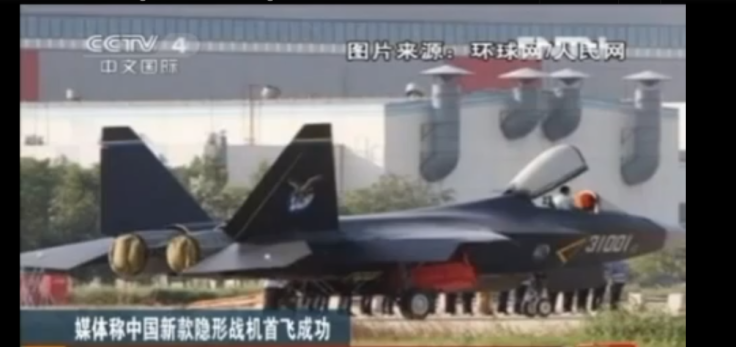China Unveils New Fighter Jet, J-31

In an ongoing effort to bolster and flex its military muscle, China unveiled its second fighter jet model this week.
The J-31, according to Reuters, made its maiden flight Wednesday in the northeast province of Liaoning at a facility owned by its builder, the Shenyang Aircraft Corp.
While its previous debut, the J-20, was heavier and more unwieldy, the Chinese designed the J-31 to be an ideal stealth aircraft.
According to Brian Fung at the Atlantic, the lighter J-31 -- with two-wheel front landing gear -- could very well be headed to the Chinese’s newly acquired aircraft carrier, which it purchased from the Ukraine in September.
With state-of-the-art jets and a new carrier in tow, China, security experts agree, is seeking to establish itself as the preeminent military power in Asia.
"This is the second entirely new fighter design that's emerged from China in the last two years, which suggests a pretty impressive level of technical development and puts them ahead, certainly, of all their regional neighbors," Sam Roggeveen, a security expert with the Lowy Institute in Sydney, told Reuters.
While China still lags far behind the United States in terms of military capabilities, its recent surge is intended to be a show of strength directed toward its regional neighbors. China is currently embroiled in territorial disputes with Japan in the East China Sea and with Vietnam and the Philippines in the South China Sea.
Despite recent aeronautical advances, China still relies on foreign engines. The new J-31, for instance, uses a Russian motor, which worries experts.
"The big Achilles heel for Chinese aerospace generally, and particularly for both of these two programs, is engines," Roggeveen says. "They still rely very much on foreign technology, and their progress on developing domestic high-performance engines for combat aircraft has been frustrating and slow," he said.
Should foreign powers be concerned with China’s recent advances? Fung and other experts don’t think so. He calls the new planes “catch up,” while Roggeveen believes it will be years before we see them enter the Chinese air force.
© Copyright IBTimes 2025. All rights reserved.






















